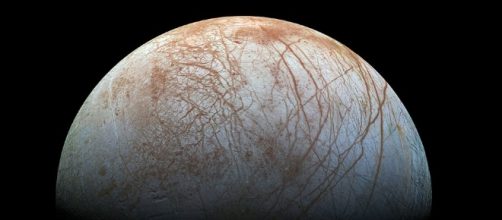The Trump administration has placed the Europa Lander Mission on the chopping block, a dubious move considering that it is a favorite project of Rep. John Culberson, R-Texas who chairs the House subcommittee that funds NASA. Even so, the space agency is testing crucial tools that such a mission would carry to the ice-bound Moon Of Jupiter that would help Search For Life.
Europa has a layer of ice that covers what many scientists believe is a salty ocean, heated by tidal forces exerted by Jupiter. Some have speculated that said ocean could contain life forms, being born, living, and dying in complete darkness.
One of the tasks of a europa lander would be to try to penetrate the ice layer as much as possible to search for signs of life on Jupiter’s moon.
The first tool NASA is looking at is a claw attached to a remote arm that would have heated tips that would grab a chunk of the ice layer and return it to the lander for analysis. The other tool is a deep core driller, either using saw blades or, perhaps, a laser or super-heated water. The idea is to penetrate as deep as possible through the ice layer, if not to get all the way to the ocean, as close as possible. The ice might contain organic material from the ocean layer that would indicate that life exists on – or rather in Europa.
One of the questions that can’t be answered now is where on Europa the robotic probe will land.
That question will be answered by the Europa Clipper, due to launch on a heavy lift Space Launch System in the early 2020s, for a direct flight to the Jupiter system. Ideally, the Europa Lander would touch down in an area where the ice layer is relatively thin, perhaps close to a vent where plumes of water from the ocean layer are being expelled into space.
Of course, the Europa Lander has to be funded before it can fly. That will be a subject of a frank exchange of views between the executive and legislative branches going forward. The betting is that Congress is going to win the argument over whether or not to land on Europa.

